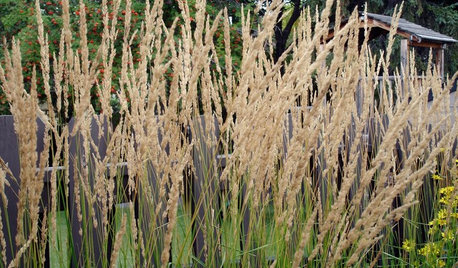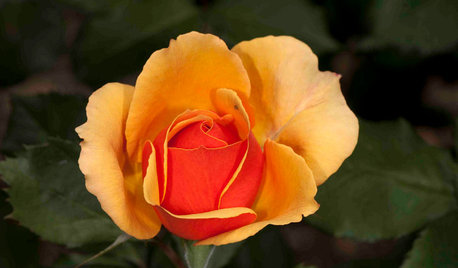Apple Rootstocks in Zone 5
RadioMichael
11 years ago
Related Stories

EDIBLE GARDENSHow to Add an Apple Tree to Your Edible Garden
Readily available, beautiful and fragrant, apple trees offer four-season interest along with crisp, juicy fruit
Full Story
COLORTime to Step Out of Your Color Comfort Zone?
If you always seem to pick warm tones, or you stick to the cool ones, bucking your natural inclination could bring new energy to a room
Full Story
GARDENING GUIDES5 Best-Behaved Trees to Grace a Patio
Big enough for shade but small enough for easy care, these amiable trees mind their manners in a modest outdoor space
Full Story
FALL GARDENING5 Fall Fruits You Can Grow in Containers
Brighten your porch or patio with a potted pomegranate, kumquat, blueberry bush or another great fall fruit
Full Story
PLANTING IDEASGreat Garden Combo: 5 High-Intensity Plants for High-Intensity Sun
Blend bold foliage and flowers to create a powerful combination that will hold its own even in the harsh light of midsummer
Full Story
GARDENING AND LANDSCAPING5 Hot Cool-Season Grasses
Chill out this spring with resilient grasses that will kick-start your garden and may just last all year
Full Story0

SPRING GARDENING5 Exotic Rose Colors for a Beautifully Different Garden
Give red a rest. Let these daring hues take the spotlight instead for a rose garden that turns heads
Full Story
EDIBLE GARDENSWhy Grow Quince? For Beauty, Fragrance and Old-Time Flavor
Delightfully perfumed fruit and lovely spring blossoms make this apple and pear cousin worth a spot in the garden
Full Story
TRAVEL BY DESIGNHouzz Travel Guide: New York City for Design Lovers
Where to stay, shop, eat and explore in the Big Apple, from a design-minded architect who lives there
Full Story
HOME TECHHow Smart TV Will Change Your Living Room
Get ready for the future of TV, in which your living room becomes a movie set, a communication hub and a gaming zone
Full Story





fruitnut Z7 4500ft SW TX
RadioMichaelOriginal Author
Related Professionals
Allen Landscape Architects & Landscape Designers · Comstock Park Landscape Architects & Landscape Designers · Ballwin Landscape Architects & Landscape Designers · Belmont Landscape Architects & Landscape Designers · Milwaukee Landscape Architects & Landscape Designers · Arlington Landscape Contractors · Bedford Heights Landscape Contractors · Bristol Landscape Contractors · Dudley Landscape Contractors · Hoffman Estates Landscape Contractors · Ramsey Landscape Contractors · St. Louis Landscape Contractors · Vacaville Landscape Contractors · Washington Landscape Contractors · Northlake Landscape Contractorsfruitnut Z7 4500ft SW TX
bob_z6
RadioMichaelOriginal Author
alan haigh